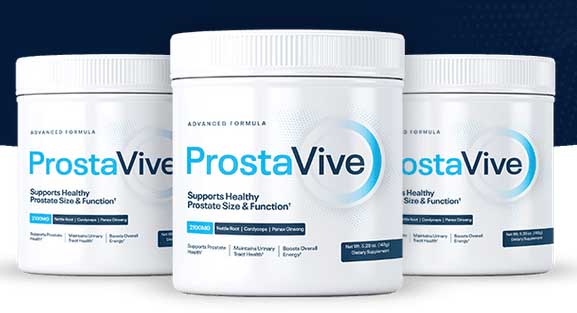Enlarged prostate and PSA levels – here’s how to understand what they mean.
PSA and the Prostate: The Tale of a Gland, a Test, and Some Mild Panic
Ah, the prostate. The tiny gland with a big attitude. Nestled comfortably under the bladder and cozied up to the urethra like it’s trying to Netflix and chill with your entire urinary tract. It’s about the size of a walnut—which is both helpful and terrifying, because no one wants to think of nuts near their nuts. But this little guy plays a big role in your love life and your health, producing a chunk of the fluid that makes up semen.
Enter the hero of our story: Prostate-Specific Antigen, or PSA. No, it’s not a campaign slogan for prostate awareness. Well, actually, it kind of is. PSA is a protein made by the prostate, and it likes to show up in your blood like an uninvited guest at your party. We can measure it, analyze it, and use it to find out what’s going on inside your prostate—whether it’s just acting up a little, or going full-on diva.
What the Heck Is PSA?
PSA is like the prostate’s version of social media. It broadcasts signals that let us know what’s going on inside that secretive little gland. Most of the time, PSA levels are low. They mind their own business, show up in blood tests, and don’t raise any eyebrows. But when the prostate starts feeling a bit inflamed, infected, or decides to throw a growth party—benign or otherwise—PSA levels spike. It’s your body’s way of saying, “Hey, you might want to check under the hood.”
Now before you panic-Google “Do I have prostate cancer?” let’s pump the brakes. Elevated PSA doesn’t always mean cancer. It can also mean your prostate is just… larger than it used to be. Like your dad’s favorite recliner—comfortable, dependable, but now it creaks when it moves and takes up more space than necessary.
BPH: The Prostate’s Midlife Crisis
Let’s talk about BPH—Benign Prostatic Hyperplasia. That’s just a fancy term for an enlarged prostate. It’s not cancer. It’s just your prostate going through a midlife growth spurt. Think of it like puberty’s less fun, more urinary-focused cousin.
As men age, the prostate often decides to grow. It doesn’t ask permission. It doesn’t apologize. It just expands like your uncle’s waistline after Thanksgiving dinner. This enlargement can put pressure on the urethra, leading to fun new hobbies like frequent urination, difficulty starting and stopping your pee stream, and the thrilling 3 a.m. bathroom dash.
So where does PSA fit into all this? Well, with an enlarged prostate, more prostate cells are doing their thing—and more cells means more PSA in your bloodstream. So BPH can raise PSA levels, even if there’s no cancer involved. It’s like your body sending you mixed signals: “I’m fine. But also, maybe panic a little.”
PSA Testing: Because Pee Problems Deserve Science
You’re at the doctor’s office. You’re over 50 (or younger with a family history of prostate stuff), and your doc suggests a PSA test. You say, “Sure, what’s the worst that could happen?” and boom—you’ve just signed up for a blood test that could unlock the mysteries of your undercarriage.
PSA levels are measured in nanograms per milliliter (ng/mL), and most docs consider anything under 4.0 ng/mL to be “normal.” But here’s the kicker: normal isn’t the same for everyone. Some guys have low PSA levels and still have cancer. Others have high PSA levels and it turns out their prostate is just a bit of a drama queen.
That’s why doctors look at trends. Is your PSA creeping up year after year like a suspiciously passive-aggressive neighbor? Is it doubling faster than your gym membership fee? These things matter.
PSA, BPH, and the Awkward Dance of Diagnosis
So here’s where things get complicated. An elevated PSA can mean:
- Benign Prostatic Hyperplasia (BPH) – Aka your prostate’s attempt to become the Hulk.
- Prostatitis – Inflammation or infection of the prostate. Sometimes painful. Always annoying.
- Prostate Cancer – The thing we’re trying to catch early.
- Recent Ejaculation or a Vigorous Bike Ride – Yep. Even these can mess with PSA levels. Your prostate is apparently very sensitive. It’s the emo teenager of organs.
That’s why PSA isn’t a perfect test. It’s like trying to figure out if someone’s cheating based only on their Spotify playlist. Suspicious? Maybe. But not definitive.
So when PSA levels go up, your doc may order more tests. Maybe a digital rectal exam (yes, that’s exactly what it sounds like—glove, lube, awkward eye contact avoidance). Maybe an MRI or a biopsy. Because while PSA is a useful tool, it’s not a magic eight ball. It’s more like a weather forecast—it tells you there might be a storm. Or it might just be cloudy with a chance of urination issues.
Enlarged prostate and PSA levels – The PSA Velocity: Fast and Curious
One thing that makes PSA more useful is watching how fast it changes over time. This is called PSA velocity, which sounds like a superhero’s name but is actually just a medical way of saying, “How quickly is your PSA rising?”
If your PSA is going up faster than your cholesterol after a bacon cheeseburger, that’s cause for concern. A rapid rise in PSA might suggest cancer, even if the number itself isn’t sky-high.
Then there’s the PSA density—a calculation that compares your PSA level to the size of your prostate (measured by ultrasound or MRI). A large prostate making a lot of PSA might not be as concerning as a small prostate producing the same amount. It’s all about proportion, like knowing whether someone yelling is angry or just Italian.

Enlarged prostate and PSA levels: To Test or Not to Test?
This is where things get spicy. For years, doctors recommended PSA screening for all men over 50. But then some studies showed that screening might lead to overdiagnosis—finding cancers that are so slow-growing they’d never cause problems, but treating them anyway with surgery or radiation (and the lovely side effects that come with those).
Cue the controversy. Now, guidelines suggest shared decision-making. That’s medical speak for: “Have a chat with your doc.” Talk about your risk factors (age, family history, race, how attached you are to your urinary function). Decide together if PSA testing makes sense for you. Basically, you and your doctor are co-pilots on this prostate adventure.
Enlarged prostate and PSA levels: A Complicated Relationship
Let’s bring it all back to BPH. If you’ve got an enlarged prostate, your PSA might go up. That doesn’t mean you’ve got cancer. It means your prostate is bigger, and big prostates make more PSA. It’s like how a bigger kitchen produces more dishes to clean—it’s just basic output.
But here’s the twist: you can have BPH and prostate cancer. That’s why PSA testing, even with its flaws, is still a valuable tool. It helps flag the need for further testing. Think of it like the check engine light on your car. You don’t ignore it. You get it checked out. Maybe it’s just low oil. Maybe your engine’s about to explode. Either way, it’s worth popping the hood.
Wrapping It Up Like a Hospital Gown
So what have we learned, folks?
- PSA is a protein made by the prostate that can be measured in the blood.
- An enlarged prostate (BPH) can raise PSA levels—but so can other things.
- PSA testing is useful but not perfect. It’s a clue, not a verdict.
- If your PSA is rising faster than your anxiety during this article, it’s time to talk to your doctor.
- Your prostate is important. And sensitive. Like a golden retriever in organ form.
Most importantly—don’t avoid the doctor just because it involves a finger and some awkward conversation. Getting checked could save your life. Or at the very least, give you peace of mind and fewer nighttime bathroom trips.
And hey, if nothing else, you now know more about PSA than 90% of the population. Go forth, spread awareness (maybe not at dinner parties), and remember: a healthy prostate is a happy prostate.
Best
Al
PS Want to add to the conversation? Leave a comment below!
